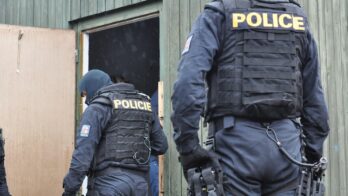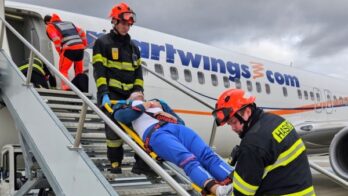When disaster strikes — whether it’s a traffic accident, fire, chemical spill, or large-scale natural catastrophe — emergency response must be swift, coordinated, and proportional to the severity of the event. In the Czech Republic, this coordination is managed by the Integrated Rescue System (IZS), which brings together firefighters, police, emergency medical services, and other specialized units under a unified structure.
To ensure the right scale of response, the IZS uses a four-tiered alarm level system, defined by Decree No. 328/2001 Coll. of the Ministry of the Interior. These levels help determine how many resources and which agencies need to respond, depending on the type and scale of the emergency.
What Are Alarm Levels?
Alarm levels are predefined categories that guide emergency services in mobilizing personnel, equipment, and support based on the severity and complexity of an incident. The four levels range from small, localized events to nationwide crises, ensuring that responses are neither excessive nor insufficient.
First Alarm Level – Localized Threats
This is the lowest level of emergency response. It’s used when the incident is limited in scope—such as a house fire, minor car accident, or an emergency affecting just a few people or a small area (up to 500 m²).
At this level:
- Basic IZS units (e.g., local fire brigade, police, or ambulance) respond.
- No continuous coordination among agencies is required.
- Typically, the incident affects a single structure or individual vehicle.
- This level ensures that minor emergencies are handled efficiently without overburdening resources.
Second Alarm Level – Regional Emergencies
The second level comes into play when up to 100 people are at risk, or the emergency spans multiple buildings with complex conditions, involves public transport, or affects up to 10,000 m² of land.
Here, the response is escalated:
- Additional units from across the regional IZS structure are mobilized.
- Constant coordination is needed—usually led by an incident commander.
- Valuable assets, like livestock or public transport, may be involved.
This level ensures rapid, region-wide cooperation while still keeping the situation manageable within regional boundaries.
Third Alarm Level – Large-Scale Incidents
Used for major emergencies, this level is declared when between 100 and 1,000 people are threatened, or if the situation involves a part of a municipality, industrial area, train convoys, or hazardous materials. Events like mass traffic accidents or airplane crashes also qualify.
Key features of this level include:
- Deployment of forces and resources from multiple regions.
- Establishment of a command post and operations staff.
- The intervention area is divided into sectors and segments for better control.
Once declared, regional authorities (e.g., the governor and municipal leaders) are officially notified, and coordination may involve multiple counties.
Special Alarm Level – Nationwide or Strategic Emergencies
This is the highest and most serious level of emergency response in the Czech Republic. It is declared when:
- More than 1,000 people are at risk.
- Entire towns or areas exceeding 1 km² are affected.
- There is a need for strategic-level coordination, or international assistance may be required.
Response at this level involves:
- Mobilizing all IZS components, including national and international support.
- Full coordination through regional and national command centers.
- Deployment of specialized forces and strategic planning teams.
Once this alarm is declared, both regional and national emergency management bodies are alerted, and inter-regional or cross-border cooperation is often activated.




Leave a Reply